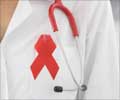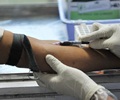The risk of female-to-male HIV transmission is increased three fold for women with bacterial vaginosis, an investigation led by UCSF has found.

The study is being published in the June 26th issue of PLoS Medicine.
The new research assessed the association between bacterial vaginosis and female-to-male HIV transmission risk in a prospective study of 2,236 HIV positive women and their uninfected male partners from seven African countries. After controlling for socio-demographic factors, sexual behavior, male circumcision, sexually transmitted infections, pregnancy and levels of HIV in the blood of the women with HIV, bacterial vaginosis was associated with a significantly increased risk for female-to-male transmission of HIV.
Bacterial vaginosis is a condition where the normal balance of microorganisms naturally found in the vagina is altered. This disruption of vaginal flora takes place when bacteria that are helpful are reduced and more harmful bacteria are increased. Besides increasing the risk of becoming infected with HIV, bacterial vaginosis can increase the risk of acquiring other sexually transmitted infections and increase the risk of preterm delivery. In addition, HIV-infected women with this disorder may have higher levels and greater shedding of the virus from the cervix and vagina.
"We looked at the increased shedding of HIV in the genital tract, but that was not sufficient to explain the increased risk of female-to-male HIV transmission. It is also possible that bacterial vaginosis causes inflammation and that could be a factor. We don't really understand the relationship between vaginal flora and inflammation," said Cohen.
In addition, he said, "we think it's likely that the sharing of genital tract microbiota between women and men may be implicated as a cause of the transmission risk. The interrelationship of the sharing of flora remains poorly understood and is an important avenue for future research."
Advertisement
Advertisement















